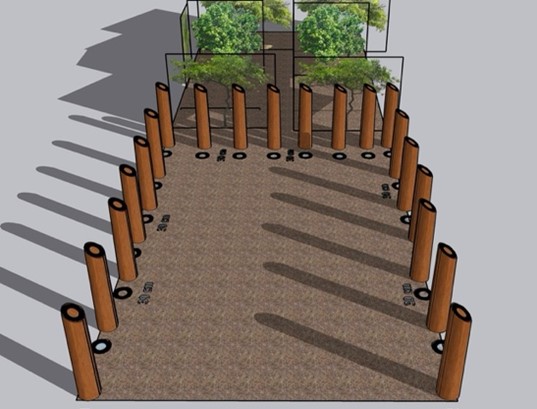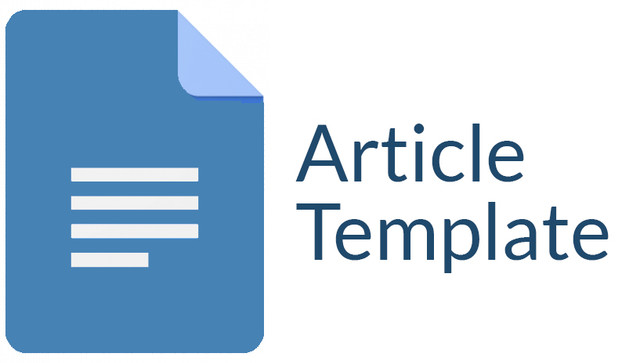Identification of Subterranean Termite Infestation in Residential Areas in Bogor Regency, West Java
DOI:
https://doi.org/10.30736/seaj.v7i1.1189Keywords:
Subterranean Termite, Infestation, Residential Areas, Bogor RegencyAbstract
Identification of Subterranean Termite Infestation in Residential Areas in Bogor Regency, West Java. Subterranean termites are one of the pests that attack buildings. The interaction between termites and buildings significantly affects the durability, safety, and comfort of residential structures. This study aimed to identify the types of termites found in residential environments and determine the intensity of damage and frequency of termite attacks on pine wood (Pinus merkusii). Wood samples cut into 2 cm x 2 cm x 46 cm were conducted using the graveyard test for three months. The identified termite species was Macrotermes gilvus (M. Gilvus). The attack intensity obtained showed that 55% of the wood samples experienced damage due to subterranean termite attacks near the residential building, 30% remained unaffected, and 15% showed damage with penetration ranging from 3% to 75% of the cross-section. These results were reinforced by the high frequency of termite attacks on bait wood, which reached 70% (>40%). These findings are useful for homeowners if the area is later used for building construction. Therefore, preliminary measures are needed to address termite infestations in the area before using it for future building construction.
Downloads
References
[ASTM] American Society for Testing and Materials. 2008. Standard Test Method of Evaluating Wood Preservatives by Field Test with Stakes. American Society for Testing and Material. United States: ASTM D 1758-08.
Alvinda, C. N. (2018). Keanekaragaman Spesies dalam Ordo Isoptera pada Zona Referensi dan Zona Rehabilitasi Taman Nasional Meru Betiri dan Pemanfaatannya Sebagai Poster. Jember: Jember University.
Arinana, A., Rauf, A., Nandika, D., Harahap, I., and Sumertajaya, I. M. (2019). Model prediksi kelas bahaya serangan rayap tanah di Provinsi DKI Jakarta berbasis spesies, tanah, dan iklim. Conference: Seminar Nasional PEI Cabang Bandung “Tantangan dan Strategi Pengelolaaan Serangga di Era Globalisasi 170-178.
Arinana, A.,, Yuwono, M. A., Priyanto. (2023). Kelas bahaya serangan rayap tanah di Kota Bogor, Jawa Barat. Jurnal Ilmu Lingkungan 21(4): 1009-1020.
[BPS] Badan Pusat Statistik. (2024). Jumlah Penduduk Kabupaten Bogor. Bogor: Badan Pusat Statistik Kabupaten Bogor.
De Lima, S. S., Pereira, R. N., De Pontes, R. M., Rossi, C. Q. (2018). Termite mounds effects of soil properties in the Atlantic Forest biome, Revista Brasileira de Ciencia de Solo 42: e0160564.
Hidayat, R., and Farihah, A. W. (2020). Identification of the changing air temperature and rainfall in Bogor. Journal of Natural Resources and Environmental Management 10(4): 616-626. 10(4): 616-626. http://dx.doi.org/10.29244/jpsl.10.4.616-626
Khan, Md. A., Ahmad, W., & Paul, B. (2018). Ecological Impacts of Termites (pp. 201–216). Springer, Cham. https://doi.org/10.1007/978-3-319-72110-1_10
Maisarah, D. R., Satriadi, T., and Ulfah, D. (2022). Identification of Building Damage Due to Termites Attack at Komplek Bincau Indah III Bincau Village District Martapura Banjar Regency. Journal Sylva Scienteae 5(4): 667-675.
Mubin, N., Harahap, I. S., and Giyanto. (2019). Diversity of subterranean termites (Blattodea: Termitoidea) on various types habitat around IPB University Campus, Bogor, Indonesia. Journal Hama dan Penyakit Tumbuhan Tropika 19(2): 158-169. DOI : 10.23960/j.hptt.219158-169
Nanda, M.A., Seminar, K. B., Nandika, A., and Maddu, A. (2019). A preliminary investigation of various signal phenomena generated by termite infestation. IOP Conference Series: Earth and Environmental Science. 335 012030. DOI 10.1088/1755-1315/335/1/012030.
Nandika, D., Rismayadi, Y., Diba, F., and Mubin, N. (2015). Rayap: Biologi dan Pengendaliannya. Surakarta: Muhammadiyah University Press.
Nawawi, H. (1993). Metode Penelitian Sosial. Yogyakarta: Gajah Mada University Press.
Pranoto, D. Y. B., and Latifah, S. (2016). Pengaruh aktivitas rayap tanah terhadap produktivitas tanah di Arboretum Sylva Fakultas Kehutanan Untan. Jurnal Hutan Lestari 4(4): 463-471.
Rentokil. (2018). The Rentokil Pest Control Report 2018: Insight from Pest Control Markets Across the Globe. London.
Rust, M. K., and Su, N. (2012). Managing social insects of urban importance. Annual Review of Entomology 57: 355-375. DOI: 10.1146/annurev-ento-120710-100634
Saputra, A., Sari, V., Ayu, F., Bachry, S., and Susanti, A. (2022). Termites attack on residential houses at Sialangmunggu, Tuah Madani, Pekanbaru. Journal of Engineering Science and Technology Management 2(1): 2828-7886.
Sayuthi, M. (2012). Rayap Macrotermes Gilvus (Hagen) (Isoptera: Termitidae) sebagai hama penting pada tanaman jarak pagar (J. Curcas) di kebun induk jarak pagar (KIJP) Pakuwon Sukabumi, Jawa Barat. Jurnal Ilmiah Pendidikan Biologi, 4(1): 56-60.
Subekti, N. (2010). Kelimpahan, Sebaran, dan Arsitektur Sarang serta Ukuran Populasi Rayap Tanah Macrotermes gilvus Hagen (Blattodea : Termitidae) di Cagar Alam Yanlappa, Jawa Barat. Tesis. Institut Pertanian Bogor.
Subekti, N. (2012). Biodeteriorasi kayu pinus (Pinus merkusii) oleh rayap tanah Macrotermes gilvus Hagen (Blattodea: Termitidae). Bioteknologi 9(2): 57-65. DOI: 10.13057/biotek/c090204.
Subekti, N., & Maret’ah, R. (2019). Estimating population size for Macrotermes gilvus Hagen (Blattodea: Termitidae) in Indonesia. 1321 (3), https://doi.org/10.1088/1742-6596/1321/3/032050
Sumarni, G. & Ismanto, A. (1988). Intensitas serangan dan komunitas rayap tanah di Kecamatan Cikampek. Jurnal Penelitian Hasil Hutan, 5(4).

Downloads
Published
How to Cite
Issue
Section
License
Copyright (c) 2025 Fitria Cita Dirna; Irma Wahyuningtyas

This work is licensed under a Creative Commons Attribution-ShareAlike 4.0 International License.
Authors who publish with this journal agree to the following terms:
- Authors retain copyright and grant the journal right of first publication with the work simultaneously licensed under a Creative Commons Attribution-ShareAlike 4.0 International License that allows others to share the work with an acknowledgment of the work's authorship and initial publication in this journal.
- Authors are able to enter into separate, additional contractual arrangements for the non-exclusive distribution of the journal's published version of the work (e.g., post it to an institutional repository or publish it in a book), with an acknowledgment of its initial publication in this journal.
- Authors are permitted and encouraged to post their work online (e.g., in institutional repositories or on their website) prior to and during the submission process, as it can lead to productive exchanges, as well as earlier and greater citation of published work (See The Effect of Open Access).

This work is licensed under a Creative Commons Attribution-ShareAlike 4.0 International License.









